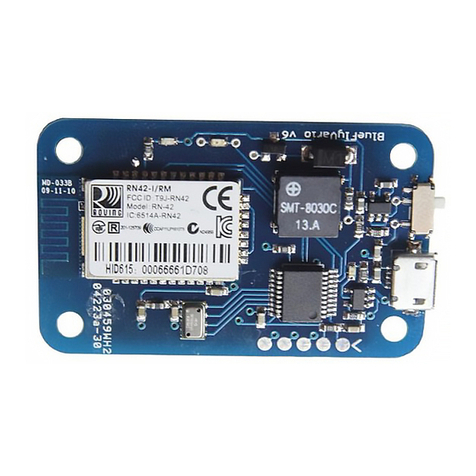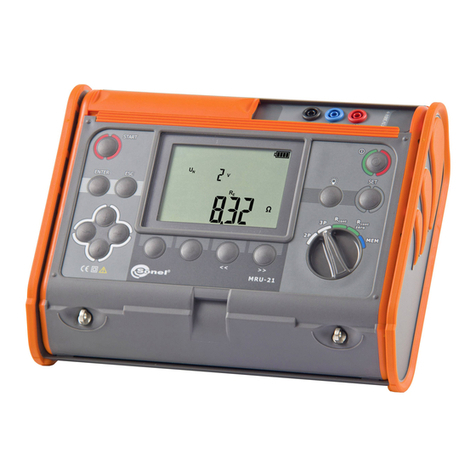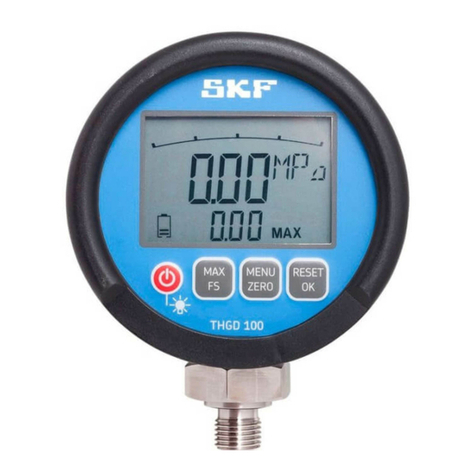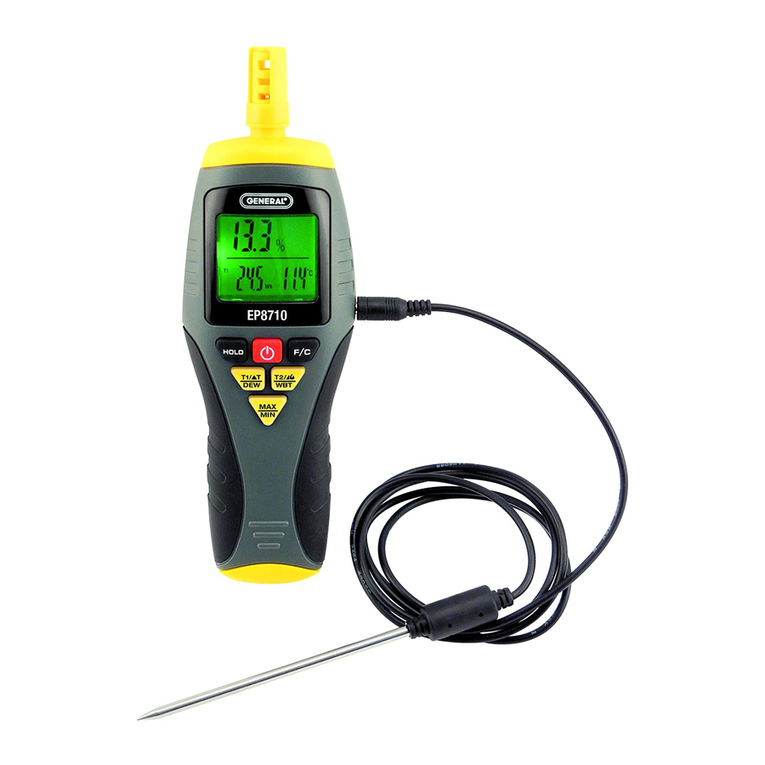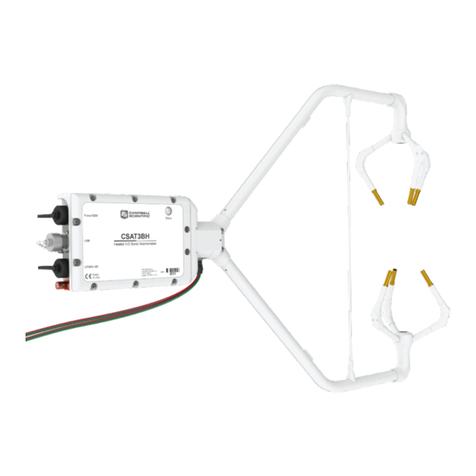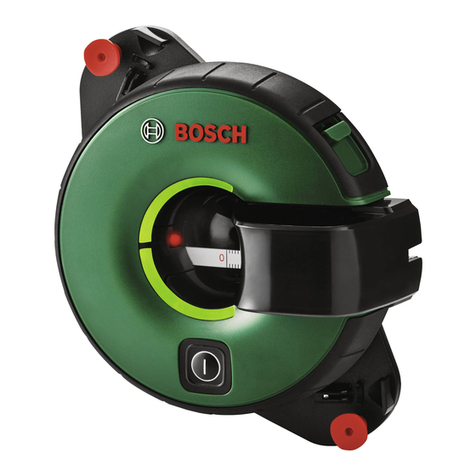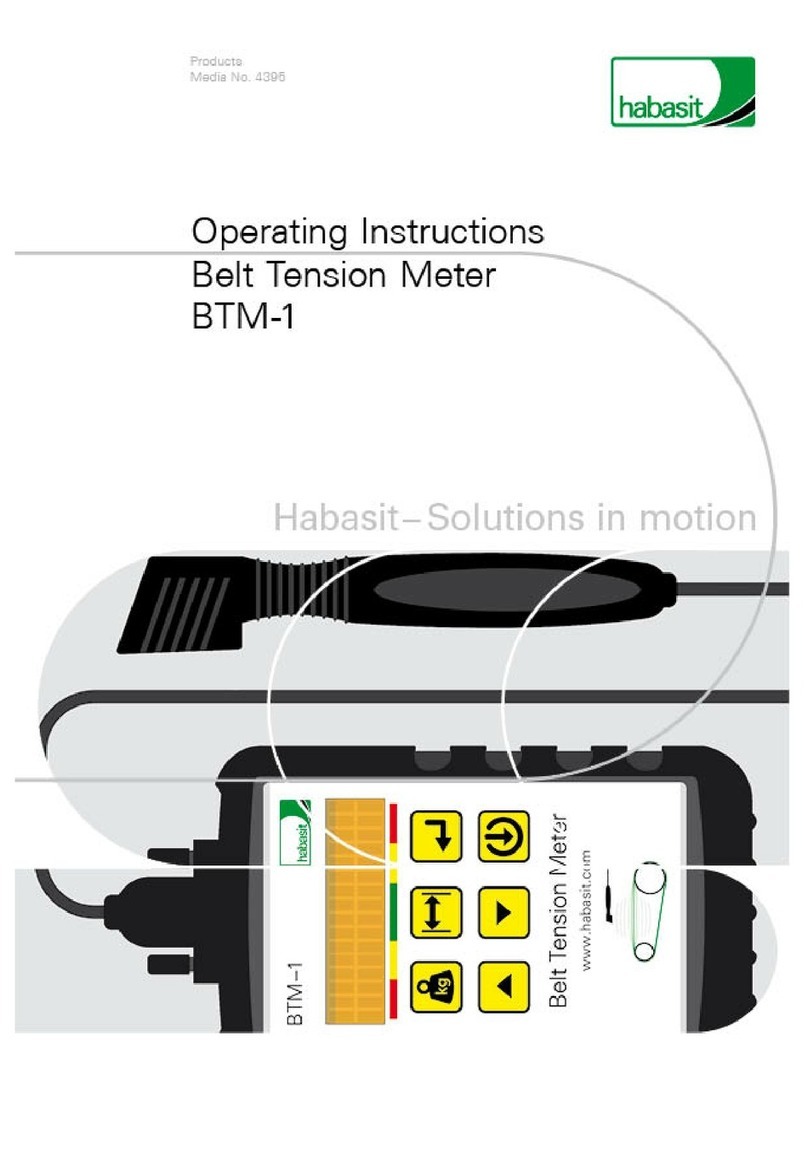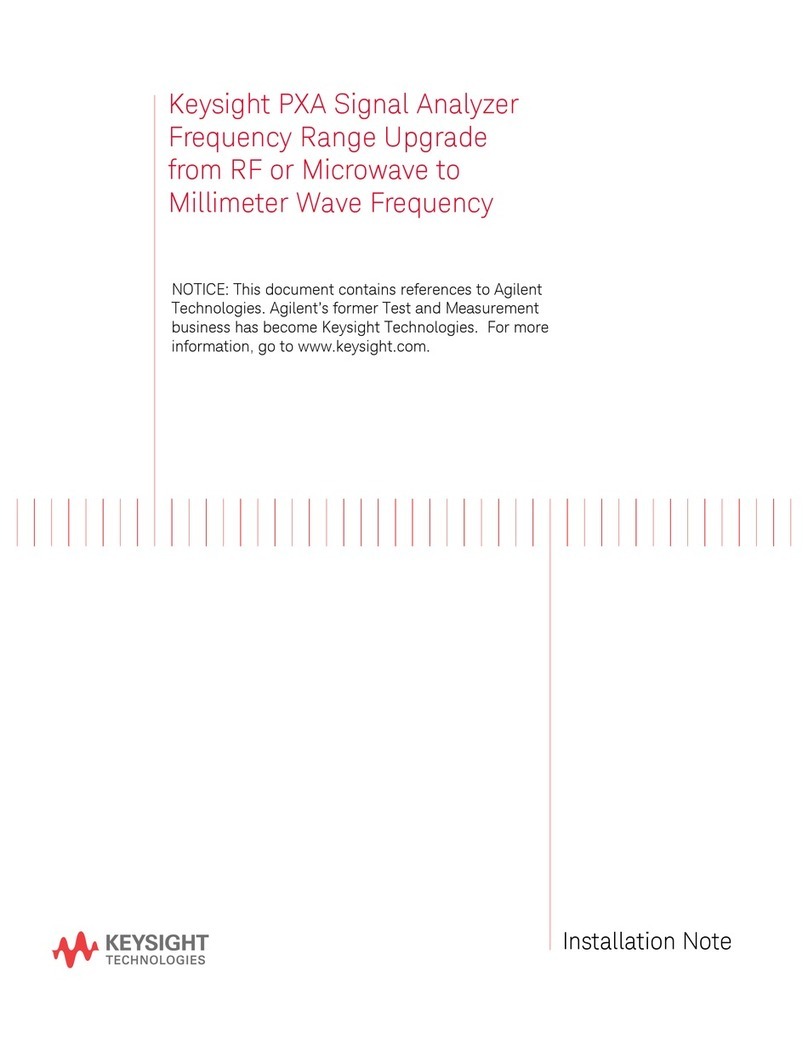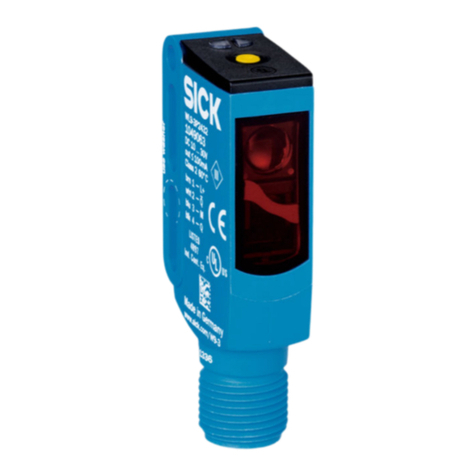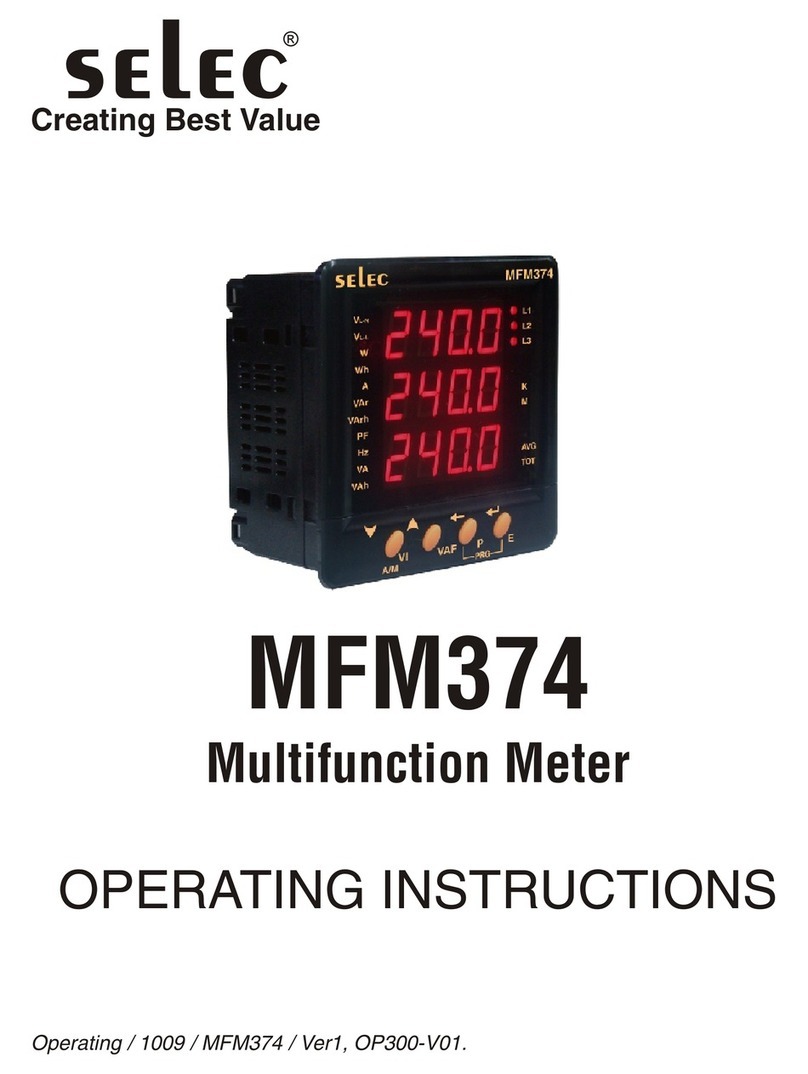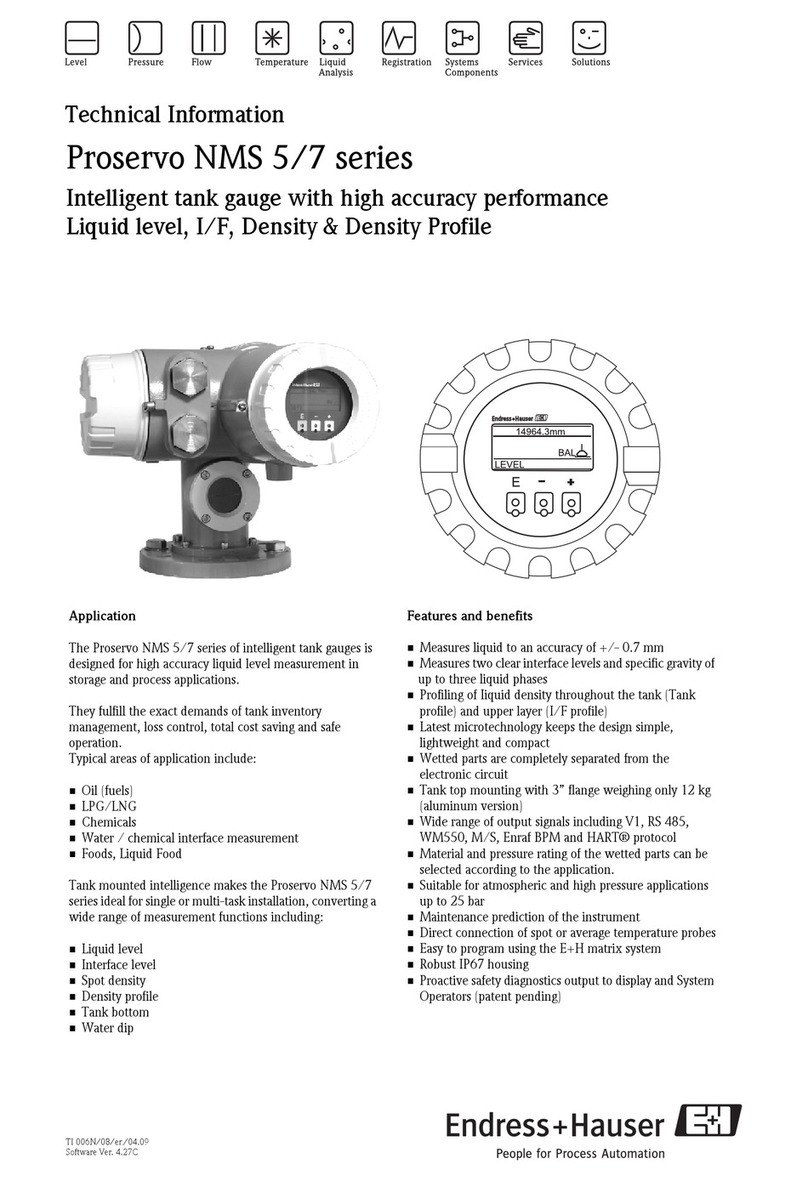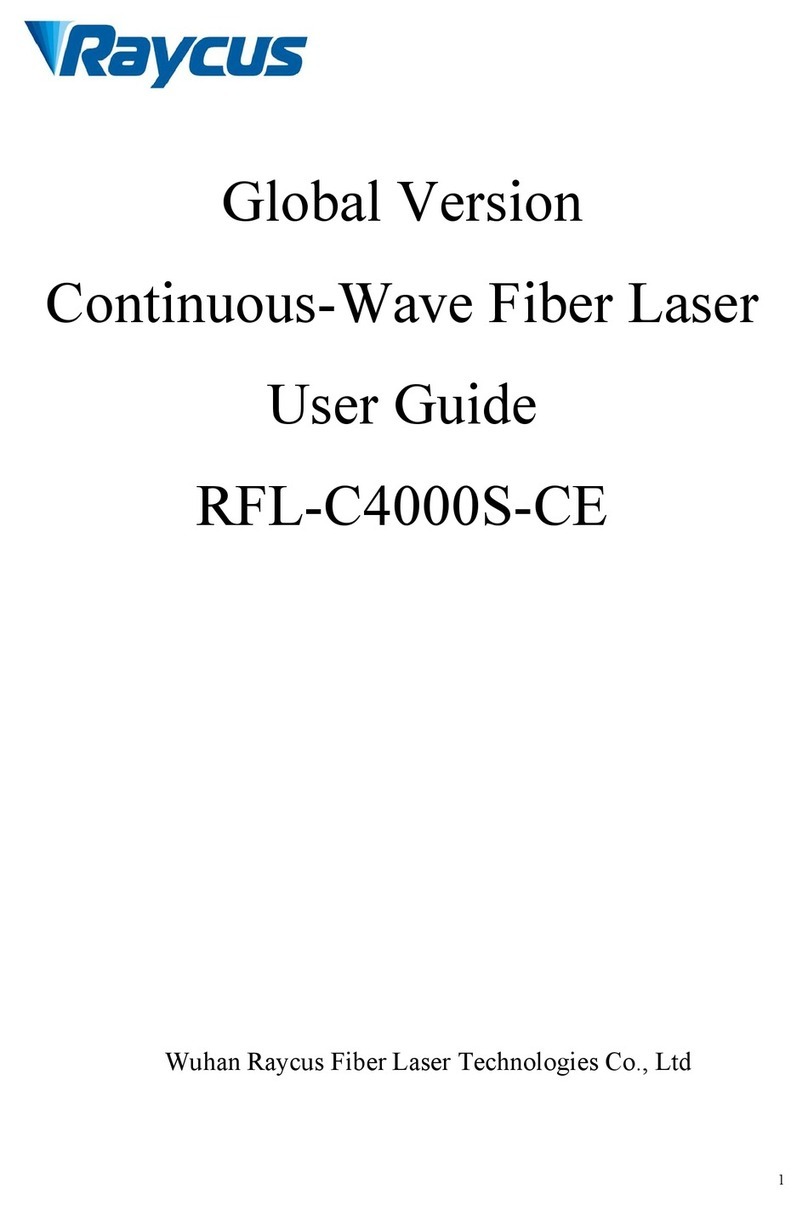Diablo Controls, Inc. DSP-13 User manual

Diablo Controls, Inc.
Copyright © 2015
Document: DSP13_MAN_B
Released: October 9, 2015
Pros Who Know Trust Diablo
User Manual
DSP-13
Tri-Axis Detection (TRIADTM) System

DSP-13 User Manual Page 2 of 16 DSP13_MAN_B
1. Contents
2. Introduction........................................................................................................................................................3
3. Technical Data ....................................................................................................................................................4
Functional Data.......................................................................................................................................................4
Electrical Data.........................................................................................................................................................5
Environmental Data................................................................................................................................................5
Mechanical Data.....................................................................................................................................................5
4. Features and Functions ......................................................................................................................................7
Presence Detection.................................................................................................................................................7
Pulse Detection.......................................................................................................................................................7
Sensitivity................................................................................................................................................................7
Fail-Safe vs Fail-Secure ...........................................................................................................................................7
Fail-Safe ..................................................................................................................................................................7
Fail-Secure ..............................................................................................................................................................8
Detector Reset........................................................................................................................................................8
Indicators................................................................................................................................................................8
5. Installation........................................................................................................................................................10
Detector Installation.............................................................................................................................................10
Sensor Installation ................................................................................................................................................10
6. Configuration....................................................................................................................................................13
Sensitivity..............................................................................................................................................................13
DIP Switches .........................................................................................................................................................13
Pin Out ..................................................................................................................................................................14
7. Troubleshooting ...............................................................................................................................................14
No Power LED .......................................................................................................................................................14
Power LED Slowly Flashing ...................................................................................................................................14
Power LED Shows Quick Flashes Once Every Two Seconds .................................................................................15
Detect LED Intermittently Comes On / Stays On Without a Vehicle Present.......................................................15
Detect LED Will Not Come On With a Vehicle Present.........................................................................................16

DSP-13 User Manual Page 3 of 16 DSP13_MAN_B
2. Introduction
The DSP-13M and DSP-13S make up the TRI-Axis Detection (TRIADTM) system. The TRIAD system is based on a
technology that measures very small changes in the earth’s magnetic field in all three axes. This means that the
TRIAD system works properly regardless of the orientation of the sensor. With sensor orientation no longer an
issue, the installer is able to install the sensor in whatever manner best suits the site. The TRIAD system can be
installed using a single saw cut. The sensor is potted in epoxy to provide durability and small enough that it can
be placed right in the saw cut. It can also be installed up to three feet below the driving surface. This allows the
TRAID sensor to be placed below pavers in a driveway or under asphalt or concrete in new construction.
The TRIAD system was specifically developed for access control systems that need reliable vehicle detection for
all weather conditions with a minimally invasive installation. The system is comprised of two parts, a master
unit (DSP-13M) and a sensor (DSP-13S). The advanced sensor’s small size and high sensitivity make it ideally
suited to vehicle detection applications.
The detector uses a 10-pin Molex connector for connections. This can be plugged into a Diablo Controls RK-1R
or RK-3R rack.
One of the distinguishing features of the TRIAD system is its ability to hold detection indefinitely, even through
power interruptions. Even if a vehicle arrives when the unit is without power, when power is restored the TRIAD
system will show detect if there is now a vehicle in the detection zone.

DSP-13 User Manual Page 4 of 16 DSP13_MAN_B
3. Technical Data
Functional Data
Sensitivity: Ten sensitivities selectable for presence or pulse modes of operation. Level 5
should be sufficient for most applications.
Pulse Output: 250 milliseconds
Response Time: Activation - 50 milliseconds minimum. 225 milliseconds maximum.
Deactivation - 25 milliseconds minimum. 200 milliseconds maximum.
Vehicle Hold Time: Indefinite, depending on environmental noise conditions.
Detection Range: The type of vehicle will determine the actual point of detection. Larger vehicles
will be sensed further away. The following chart is based on an SUV.

DSP-13 User Manual Page 5 of 16 DSP13_MAN_B
Electrical Data
DSP-13M Operating Voltage: 8 volts to 30 volts DC
DSP-13M Operating Current: 60 milliamps maximum and includes all current used by the sensors.
DSP-13M Output Rating: The output is an open-collector output rated for sinking up to 50 milliamps. It is
not an isolated output and is referenced to pin 10 (Common) of the DSP-13M.
Sensor to Sensor Proximity: The sensors are passive measurement devices and as such will not interfere
with other sensors at any distance.
Environmental Data
Operating Temperature: -35°F to 165°F (-37°C to 74°C)
Storage Temperature: -40°F to 176°F (-40°C to 80°C)
Humidity: Up to 95% relative humidity non-condensing
Mechanical Data
DSP-13M Mounting Position: Any
DSP-13M Housing Material: ABS
DSP-13M Size: 2.375 inches (High) x 2.340 inches (Wide) x .860 inches (Deep)
60.36mm (High) x 59.44mm (Wide) x 21.84mm (Deep)

DSP-13 User Manual Page 6 of 16 DSP13_MAN_B
DSP-13S Mounting Position: Any
DSP-13S Housing Material: Yellow Polyolefin
DSP-13S Size: .800 inches (High) x 1 750 inches (Wide) x .390 inches (Deep)
20.32mm (High) x 44.45mm (Wide) x 9.91mm (Deep)
DSP-13S Lead-in Diameter: .175”
DSP-13S Lead-in Length: 75 feet

DSP-13 User Manual Page 7 of 16 DSP13_MAN_B
4. Features and Functions
Presence Detection
The output will remain activated as long as a vehicle is sensed in the detection zone. This detector always
operates in a permanent presence or infinite presence detection mode. The sensor technology used is capable
of remembering vehicles in the detection zone even if the power is interrupted for long periods of time. In fact,
it can determine if a vehicle arrived in the detection zone while power was removed and provide the correct
presence output on power restoration.
Pulse Detection
The pulse mode used is commonly referred to as Pulse On Entry.
When pulse mode is selected the channel will output a pulse when the vehicle is first detected and will not
output again until the detection zone is no longer occupied.
Sensitivity
The detector has ten user selectable sensitivity levels. In most situations the setting of 5 will work effectively.
The sensor does have hysteresis between the detect and drop thresholds to ensure that the detector output
does not chatter during fringe detections.
Fail-Safe vs Fail-Secure
Here’s a little note on fail-safe versus fail-secure operation. In general, a fail-safe detector will output “detect”
when the sensor circuit is failed. This is always useful on a safety sensor to prevent accidental closure of a gate
arm on a vehicle. On the free exit sensor this will keep the gate open until the situation is fixed. This is useful in
applications where it is important to allow traffic flow to continue. A fail-secure detector will never output
“detect” when the sensor circuit is failed. This will keep the gate closed. This is useful in high-security areas or
installations where containment is needed.
Fail-Safe
When the detector is in the presence mode of operation and a sensor failure is detected, the output will stay
activated during the failure. In gate applications this feature is used to automatically open the gate if a sensor
fails.
It should be noted that a power failure will always result in a fail-secure operation. Fail-safe operation is only
available when a valid input voltage is applied to the detector. When configured for pulse output, the detector
will always operate in the fail-secure mode.

DSP-13 User Manual Page 8 of 16 DSP13_MAN_B
Fail-Secure
When the detector is in the presence mode of operation and a sensor failure is detected, the output will stay
deactivated during the failure. In gate applications this feature is used to keep the gate closed if a sensor fails.
It should be noted that a power failure will always result in a fail-secure operation. When configured for pulse
output the detector will always operate in the fail-secure mode.
Detector Reset
When the reset switch is pressed, the master will send a reset command to all connected sensors. If a prior
sensor fault was being displayed, it will be cleared. Care should be taken to insure that the detector is not reset
while any vehicles or objects are in or near the detection zone. These vehicles or objects may cause a
permanent offset in the reference readings for the sensors and may impact correct operations of the sensors.
Indicators
The DSP-13M is equipped with two LED indicators: Power (Green) and Detect (Red).
Power LED –The green power LED has four possible states:
OFF The voltage applied to the detector is less than the minimum display
voltage of approximately 3.3 volts. The detector should not be
operated below 7 volts DC as unpredictable operation will occur.
RESET When the detector is reset (a reset occurs automatically at power up),
the LED will turn off for 200 milliseconds, on for 200 milliseconds, off for
200 milliseconds, and then resume its normal display.
PRIOR FAILURE The detector is equipped with the ability to remember prior faults that
have occurred since the last power interruption or reset. The LED will
turn off for 100 milliseconds, on for 100 milliseconds, off for 100
milliseconds, on for 1700 milliseconds and then repeat the sequence
until power is cycled or the detector is reset.
NORMAL The LED is always on when the detector is in its normal state of
operation with no prior failure in memory.

DSP-13 User Manual Page 9 of 16 DSP13_MAN_B
Detect LED –The red Detect LED is used to display the status of detection zone and a pending change of
sensitivity. There are several different statuses that can be displayed on this LED:
RESET When the detector is reset (a reset occurs automatically at power up),
the LED will turn off for 200 milliseconds, on for 200 milliseconds, off for
200 milliseconds, and then resume its normal display.
SENSITIVITY CHANGE When the sensitivity setting is changed, the detect LED will begin
flashing at a 5 Hz rate (100 milliseconds on, 100 milliseconds off). Once
the sensitivity switch has not changed position for one second, the
detector will automatically reset to implement the new sensitivity
setting. Returning the sensitivity to the original setting will also stop the
flashing.
DETECTION When the detector is in presence mode the LED will be on while a
vehicle is in the detection zone. In the pulse mode the LED will turn on
for 250 milliseconds with the output, off for 250 milliseconds, and then
show the occupancy display until the vehicle exits.
OCCUPANCY When the detector is operating in the pulse mode of operation and the
detection zone is currently occupied, the LED will be turned on to a
dimmer level than normal and the LED will be flashed at a very fast rate
that will make it look like it is flickering.
This display is meant to be easily distinguishable from the normal on
display. With this additional display mode, the pulse mode of operation
can easily be monitored for correct operation.
A look at the following figure will show how this occupancy indication is
used to provide additional information during pulse mode operation. In
the figure the occupancy display is shown as the gray shaded area.

DSP-13 User Manual Page 10 of 16 DSP13_MAN_B
5. Installation
Detector Installation
Location: The detector should be installed in a weatherproof location that is near the detection zone. Ideally, a
technician should be able to see the detection zone and the detector at the same time.
Mounting: The detector will function when mounted in any orientation. When using a rack, it is best to mount
the rack such that the front panel of the detector will be easily accessible for configuration and troubleshooting.
Wiring: When the detector is plugged in to a rack, the rack will provide and identify the wiring connection
points.
Sensor Installation
The reliability and overall performance of the detector are greatly dependent on the installation of the sensor
itself. There are three factors that go into a good sensor installation: sensor location, type of wire used (if
additional lead-in is needed), and installation practices.
Sensor Location: The sensors sense changes in the earth’s magnetic field. The length of the edge facing the
sensor will affect its detection distance. As a vehicle approaches a sensor head on, it presents an edge
approximately six foot long. However, if the vehicle drives by the side of the sensor, it presents an edge of
typically 12 to 15 feet. Therefore, the sides of a vehicle are easier to detect than the vehicle head on. This
causes the detection pattern to be oblong in the driving lane. Usually 25% to 50% wider than it is long.
It is advised that you tape down the sensor on the surface in the approximate location that you plan to install it.
Connect it to the master and verify that detection zone is where you want it to be and that moving objects, such
as a gate, are not picked up by the sensor. You may need to adjust the sensitivity and the placement of the
sensor to get the desired detection zone. Be careful to insure that during your testing that vehicle tires do not
run over the sensor itself while it is taped down. This will destroy the sensor.
Type of Wire Used: The sensors are provided with 75 feet of lead-in cable and this is usually sufficient for most
installations. However, if additional lead-in cable is needed a two conductor, twisted pair cable should be used.
This cable should have a jacket rated for wet locations as most conduits will eventually fill with water at some
point.
The gauge of the wires in the lead-in cable to use depends on distance in cable feet from the sensor to the
detector. The gauge of the wires within the cable can be 20AWG as long as the detector is within 100 feet of the
sensor in cable distance. For 100 to 200 feet, use at least 18AWG wires. At greater than 200 feet, use a 16AWG
wires at a minimum.
Installation Practices: The sensors can be installed in several different ways depending on the type of driving
surface and if the site is new construction or existing.

DSP-13 User Manual Page 11 of 16 DSP13_MAN_B
For existing driving surfaces of asphalt or concrete, a single 1/4” saw slot can be cut to the desired location of
the sensor with an appropriate cutting disk for the road surface. At the desired sensor location, a 1” to 2” hole
should be core drilled into the driving surface. The sensor should never be installed into the saw slot. Doing so
will void the warranty for the sensor. The saw slot should be deep enough that the sensor and lead-in cable
will have a minimum of ½” of sealant above them in the slot. More is better. Going too deep with the saw cut is
also a concern. Deep cuts in a road surface may impact the structural strength of the roadway, especially if any
reinforcement material is cut.
Once the saw slot has been cut, the slot should be cleaned of all loose material. High pressure air should be
directed in to the saw slot to remove all debris. This will also help remove dust from the saw cutting operation
from the sides of the saw slot. This will allow better adhesion of the sealant to the saw slot.
In order to keep the sensor cable at the bottom of the saw slot, 1” pieces of backer rod should be placed in the
saw slot every 1 to 2 feet. The backer rod should be sized such that it fits snugly in the saw slot. Use a blunt
object (not a screwdriver) to press the backer rod pieces down into the saw slot as far as they will go. Keeping
the sensor cable at the bottom of the saw slot allows the sealant to provide the maximum amount of protection
possible from foreign object penetration. Never use a continuous piece of backer rod over the sensor and cable,
as this would prevent the sealant from encapsulating the sensor and cable. NOTE: Backer rod is available at
most home improvement stores and in several sizes.
The sealant used should be appropriate for the roadway surface that was cut. Generally, epoxy, urethane, or
polyester based sealants are used for concrete surfaces and polyester or urethane based sealants are used for
asphalt surfaces. However these are not hard guidelines and specific circumstances will determine which type
of sealant should be used.

DSP-13 User Manual Page 12 of 16 DSP13_MAN_B
For existing driving surfaces made of pavers, a line of pavers can be removed to the desired sensor location. The
sensor should then be dug down a couple of inches below the pavers and placed in a bed of sand and covered
with at least an inch of sand. The lead-in cable should also have a small amount of sand cover over it to protect
it from the pavers.
For new construction sites, the conduit stub up is
the preferred installation method. This method is
the best installation method when a decorative
driving surface will be used and disturbing the
driving surface in the future is a concern in the
event that a sensor fails. A 1” Schedule 80 conduit
can be stubbed up at the desired detection point
in the driving surface. This conduit is then sleeved
with a 2” Schedule 80 conduit that is used to
protect the sensor. It is important that these
conduits be PVC and not metallic. The 1” conduit
can transition to metallic pipe after the elbow if
desired.
Once the sensor cable is pulled through the 1”
conduit, the sensor should be held 2” down from
the top of the 2” conduit sleeve while the 1”
conduit opening is sealed with plumber’s putty.
This is done to keep the sand used in the next
step, from filling the 1” conduit. Now that the 1”
conduit is sealed, fill the sleeve with sand (1” from
the top if a sealant will be used to cap the sleeve).
If the sensor cable needs to be spliced to another
cable to get to the detector, the splice should be
done in a junction box and the connections should
be soldered and weatherproofed.

DSP-13 User Manual Page 13 of 16 DSP13_MAN_B
6. Configuration
Sensitivity
The ten position rotary switch is used to set the sensitivity. For most
installations the setting of 5 will work well. If motorcycle detection is required,
you may need to use a higher setting.
One second after changing the sensitivity setting, the detector will automatically
reset itself to implement the new sensitivity setting. The technician must make
sure that there are no vehicles or other objects over or near the sensor when the
reset occurs. If the zone was not clear, simply press the reset button once the
zone is clear.
DIP Switches
There are two DIP switches for adjusting the configuration of the TRIAD system.
There are no internal DIP switches or jumpers to configure.
When a DIP switch is moved to the left position it is in the ON condition. The
right position is OFF.
Pulse / Presence (Switch 2) –This switch determines if the detector operates
using presence detection or pulse detection. The switch setting takes effect
immediately when changed.
OFF = the presence mode of operation is selected. ON = the pulse mode of operation is selected.
Fail Type (Switch 1) –This switch determines if the output operates in a fail-safe or fail-secure mode of
operation.
During fail-safe operation, when the detector is in the presence mode of operation and a sensor failure is
detected, the output will stay activated during the failure. In gate applications this feature is used to
automatically open the gate if a sensor fails.
During fail-secure operation, when the detector is in the presence mode of operation and a sensor failure is
detected, the output will stay deactivated during the failure. In gate applications this feature is used to keep the
gate closed if a sensor fails.
It should be noted that a power failure will always result in a fail-secure operation. Fail-safe operation is only
available when a valid input voltage is applied to the detector. When configured for pulse mode the output will
always operate in the fail-secure mode.
OFF = the fail-safe mode of operation is selected. ON = the fail-secure mode of operation is selected.

DSP-13 User Manual Page 14 of 16 DSP13_MAN_B
Pin Out
There is only one version of the DSP13M. The table below shows the pin out for the detector.
Pin
Function
1
Sensor connection
2
Sensor connection
3
Power (12 to 24 volts DC)
4
No connection
5
No connection
6
No connection
7
No connection
8
Detect output (Open Collector)
9
Power (12 to 24 volts DC)
10
Power and logic common
7. Troubleshooting
No Power LED
Use a meter to measure the voltage applied to the detector. The voltage must be DC and above 8 volts.
If the correct voltage is applied and the power LED is not on, replace the detector.
Power LED Slowly Flashing
This flash rate indicates that the sensors cannot be seen by the master. This will happen if the applied DC
voltage is below about 6.5 volts. If the voltage is above the required 8 volts for normal operation, either the
wiring to the sensor has failed or the sensor itself has failed. Check and tighten all connections and splices in the
sensor wiring path.
Connect a known good sensor to the master. If the slow flashing stops and is replaced with two quick flashes
every two seconds, or just a solid power LED, then the issue is with the sensor or its wiring.
If the correct voltage is applied and the power LED is still flashing, replace the detector.

DSP-13 User Manual Page 15 of 16 DSP13_MAN_B
Power LED Shows Quick Flashes Once Every Two Seconds
This flash rate indicates that the detector has had a failure, but is currently working correctly. There are three
types of failures that the detector will remember:
Flashes
Remembered Failure
Corrective Action
1
DSP13M Failure
Replace DSP13M if issue persists
2
DSP13S Failure
Replace DSP13S if issue persists
3
Communications failure
See text below
Intermittent communications failures are usually wiring connections. Any splices in the lead-in cable should be
redone. If there are any wire nuts used in the circuit, remove them and replace with a crimp connection or
preferably, a soldered connection. The fault could also be a fatigued point in the cable. This can occur at
locations where the cable crosses an expansion joint in the road surface. Any place where the cable must move,
even if only a very tiny amount, can cause wire fatigue. The actual failure point may be very difficult to find.
Often the sensor must just be replaced if the issue persists but cannot be found.
Other possible source of fault is a foreign object being embedded in the saw cut and damaging the cable or
sensor. Another is that the cable has been damaged where it enters or exits a conduit or junction box, or that a
conduit that the cable is in has been damaged (crushed, kinked, bent, cut, etc.).
Detect LED Intermittently Comes On / Stays On Without a Vehicle Present
This type of symptom is usually caused by one of two issues: electrical interference or moving objects in
proximity to the sensor.
Electrical Interference –There are several possible sources of electrical interference: power lines and electric
motors, just to name a few.
Anything that uses electricity is a possible source for electrical interference depending on its proximity to the
sensor and the amount of energy being used. If you believe the sensor is experiencing electrical interference,
turn off the device believed to be the source of the interference and see if the problem goes away. Sometimes
this is not possible and more technical means are needed to help identify the source. Call Technical Support in
this case.
Moving Objects in Proximity to the Loop –Objects that can move and are ferrous, metallic, or somehow
electrically conductive, may cause detection issues.
A common issue is movement of a slide gate or gate arm in close proximity to a sensor. The best solution would
be to move the detection area further away from the moving gate. We recommend that all sensors should be at
least 6 feet from a slide gate. Try lowering the sensitivity one level at a time so that the desired vehicles are still
detected, but not the moving gate. NOTE: Do not lower the sensitivity too much or vehicles will no longer be
detected.
Another possibility is metal objects in close proximity to the loop. Utility manhole covers are objects that may
move slightly when vehicle tires drive over them, especially if the vehicle turns while a tire in on the cover. Most

DSP-13 User Manual Page 16 of 16 DSP13_MAN_B
manhole covers can be bolted in place. Contact the owner of the manhole to see what can be done to mitigate
the cover movement.
Detect LED Will Not Come On With a Vehicle Present
The first thing to do is verify that the LED in question is still working. This is accomplished by a quick lamp test.
Reset the detector by pressing the reset switch. Both LEDs should flash at least once. If the red detect LED does
not illuminate, then replace the detector.
If the red LED illuminates, then perhaps the sensitivity setting is too low. In most cases, the sensitivity setting of
5 is the correct setting. However, to compensate for some unusual site geometries, this setting may be
inadequate. Adjust the sensitivity by one level higher at a time and recheck the detector for proper detection.
If the sensitivity is set to 9 and the red LED still does not come on, swap the detector between a working
detector and the detector with the issue. If the problem follows the sensor, the sensor is the problem. If it stays
in the detector, replace the detector.
Table of contents
